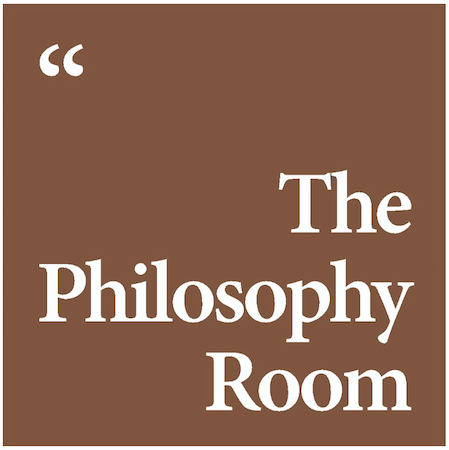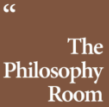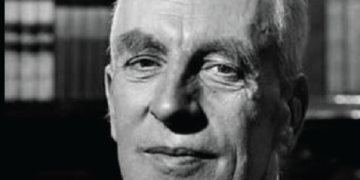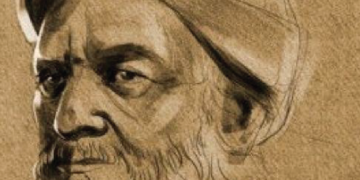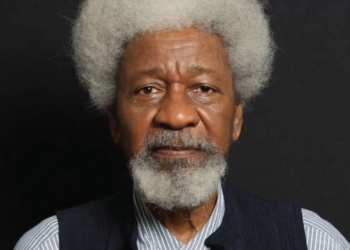Al-Kindi
1) His Biography:
Al-Kindi was born in Kufa to a Kinda aristocratic family, descending from the leader al-Ash’ath ibn Qays, a Prophet Muhammad contemporary. In the early Islamic period, the family was one of Kufa’s most significant tribal nobility families, until it lost much of its authority following Abd al-Rahman ibn Muhammad ibn al-Ash’ath’s insurrection.
Al-Kindi obtained his early schooling in Kufa, where his father, Ishaq, was the governor. Later, he moved to Baghdad to finish his studies, where he was favoured by the Abbasid caliphs al-Ma’mun (r. 813–833) and al-Mu’tasim (r. 833–842). Al-Ma’mun appointed him to the House of Wisdom in Baghdad, a newly founded centre for the translation of Greek philosophical and scientific writings, based on his learning and capacity for study. He was also noted for his exquisite calligraphy, and he worked as a calligrapher for al-Mutawakkil at one point.
Al-Ma’mun’s brother al-Mu’tasim, succeeded him as Caliph after he died. Al-Kindi’s status would be bolstered by al-Mu’tasim’s appointment of him as his son’s tutor. Al-Kindi’s fame fell after the accession of al-Wthiq (r. 842–847) and, in particular, al-Mutawakkil (r.847–861).
Some ascribe al-Kindi’s demise to scholastic disputes at the House of Wisdom, while others point to al-Mutawakkil’s frequent and violent persecution of unorthodox Muslims (as well as non-Muslims); at one point, al-Kindi was beaten and his library was temporarily taken. According to Henry Corbin, an expert on Islamic studies, al-Kindi died “a lonely man” in Baghdad in 873, during the reign of al-Mu’tamid (r. 870–892).
Al-Kindi’s intellectual works faded into obscurity after his death, and many of them were lost even to later Islamic scholars and historians. Apart from the uncompromising orthodoxy of al-Mutawakkil, the Mongols also burned innumerable libraries during their invasion, according to Felix Klein-Franke. However, he claims that the most likely reason for this was because his writings were never popular with later famous philosophers such as al-Farabi and Avicenna, who eventually eclipsed him. Al-Mu’tasim, to whom al-Kindi devoted his most renowned work, On First Philosophy, and whose son Ahmad al-Kindi educated, was the pinnacle of his philosophical career.
According to Arab bibliographer Ibn al-Nadim, al-Kindi published at least 260 works, primarily in the fields of geometry (32 books), medicine and philosophy (22 books each), logic (nine books), and physics (twelve books). Although most of his books were lost throughout the years, a few survived in the form of Latin translations by Gerard of Cremona, and others were unearthed in Arabic manuscripts; most crucially, twenty-four of his lost works were discovered in a Turkish library in the mid-twentieth century.
2) His Main Works:
• The Book of the Judgement of the Stars, including The Forty Chapters, on questions and elections.
• On the Stellar Rays.
• Several epistles on weather and meteorology, including De mutatione temporum, (“On the Changing of the Weather”).
• Treatise on the Judgement of Eclipses.
• Treatise on the Dominion of the Arabs and its Duration (used to predict the end of Arab rule).
• The Choices of Days (on elections).
• On the Revolutions of the Years (on mundane astrology and natal revolutions).
• De Signis Astronomiae Applicitis as Mediciam ‘On the Signs of Astronomy as applied to Medicine’
• Treatise on the Spirituality of the Planets.
3) Main Themes In His Writings:
Metaphysics:
The purpose of metaphysics, according to al-Kindi, is to gain knowledge of God. As a result, he does not differentiate between philosophy and theology, believing that they are both concerned with the same issue. Later philosophers, particularly al-Farabi and Avicenna, would strongly disagree with him on this point, claiming that metaphysics is concerned with being qua being, and that God’s nature is essentially accidental.
God’s absolute oneness, which al-Kindi believes a unique feature linked with God, is central to his view of metaphysics (and therefore not shared with anything else). He implies that, while we may think of any existing item as “one,” it is actually “one” and “many” at the same time.
He claims, for example, that while a body is one, it is made up of many diverse pieces. “I see an elephant,” for example, might imply “I see one elephant,” yet the term “elephant” refers to a kind of animal that includes numerous. As a result, only God is truly one, both in actuality and in notion, devoid of any multiplicity. Some argue that this interpretation necessitates a strict negative theology because it suggests that any description that may be predicated on anything else cannot be applied to God.
Al-Kindi described God as the Creator in addition to perfect oneness. As a result, He serves as both a final and effective cause. Unlike later Muslim Neo-Platonist thinkers, who claimed that the universe came into being as a result of God’s existence “overflowing,” which is a passive act, al-Kindi saw God as a proactive agent. God is the agent in fact, because all other intermediary agencies are reliant on Him.
The core premise is that God “acts” through created intermediates, who “act” on one another – in a chain of cause and effect – to achieve the desired result. In reality, these intermediary agents do not “act,” but rather serve as a channel for God’s own actions. This was especially important in the development of Islamic philosophy because it made Aristotelian philosophy’s “first cause” and “unmoved mover” consistent with Islamic revelation’s understanding of God.
Epistemology:
Al-Kindi proposed the existence of a distinct, incorporeal, and universal intellect (known as the “First Intellect”). It was the first of God’s creations, and it served as a conduit for the creation of all subsequent things. It was vital to al-Kindi’s epistemology which was influenced by Platonic realism, in addition to its obvious philosophical importance.
Everything in the material world, according to Plato, corresponds to certain universal forms in the celestial realm. These are abstract ideas that apply to all physical objects and creatures, such as species, quality, and relation. The property of “redness” in a red apple, for example, is derived from the appropriate universal.
Al-Kindi, on the other hand, claims that human intellects are only capable of comprehending these. The First Intellect, which is constantly thinking about all of the universals, brings this potential to life. He claims that the intellect’s external agency is required since human beings cannot arrive at a universal notion solely through perception. In other words, an intellect cannot understand a thing’s species by looking at one or more of its examples. According to him, this will only produce a “sensible form” that is inferior to the universal form that we desire. The global form can only be realised through the First Intellect’s contemplation and actualization.
To explain his thesis, he uses the metaphor of wood and fire. Wood, he claims, has the capacity to be hot (just as a human can think about a universal), and hence requires something else that is already hot (such as fire) to bring it to life. This suggests that in order for the human intellect to consider something, the First Intellect must have already considered it. As a result, he claims that the First Intellect must be thinking about everything at all times. When the human mind grasps a universal through this method, it becomes part of the individual’s “acquired intellect,” which he or she can think about whenever they want.
The Soul and the Afterlife:
According to Al-Kindi, the soul is a simple, immaterial essence that is only connected to the physical universe by its faculties that act through the physical body. To describe the nature of our worldly existence, he compares it to a ship that has temporarily anchored itself at an island and permitted its passengers to disembark on its ocean voyage.
Passengers who stay too long on the island may be left behind when the ship sets sail again, according to the implied warning. Al-Kindi is demonstrating a Stoic notion here: we must not become attached to material things (represented by the island) because they will inevitably be taken away from us (when the ship sets sail again). He then connects this to a Neo-Platonist idea, stating that our soul can be directed toward the pursuit of desire or the pursuit of intellect; the former will bind it to the body, causing it to die when the body dies, whereas the latter will free it from the body, allowing it to live “in the light of the Creator” in a realm of pure intelligence.
The relationship between Revelation and Philosophy:
Prophecy and philosophy, in al-Kindi’s opinion were two separate paths to the truth. In four ways, he contrasts the two perspectives. To begin with, while becoming a philosopher requires extensive training and study, prophecy is given upon someone by God. Second, the philosopher must come to the truth on his own (and with much difficulty), whereas the prophet has God reveal the truth to him. Third, the prophet’s understanding is clearer and more extensive than the philosopher’s since it is divinely revealed. Fourth, the prophet’s ability to communicate this wisdom to the common people is exceptional.
As a result, al-Kindi claims that the prophet is exceptional in two areas: how easily and confidently he gets the truth, and how he conveys it. The key conclusion, however, is that the prophet’s and philosopher’s knowledge are identical in content. This, according to Adamson, indicates how restricted al-Kindi’s superiority of prophecy was.
Furthermore, al-Kindi took a naturalistic approach to prophetic visions. He claimed that select “pure” and well-prepared souls may acquire information about future occurrences through the ability of “imagination” as defined by Aristotelian philosophy. He does not credit such visions or dreams to divine revelation, but rather to the ability of human imagination to receive the “shape” of something without having to observe the physical entity to which it refers. As a result, it appears that anyone who has purged oneself is capable of receiving such visions. Al-Ghazali criticises this theory, as well as other naturalistic explanations of prophetic miracles, in his Incoherence of the Philosophers.
4) His Influence in the History of Ideas:
Al-Kindi was considered one of the best Islamic philosophers of his day and a master of many different areas of thought. His impact on science, mathematics, medicine, philosophy, and music was enormous, and it lasted for centuries. In his al-Fihrist, Ibn al-Nadim lauded Al-Kindi and his work, claiming that he was the best man of his day, with unparalleled knowledge of all old disciplines. He is known among Arabs as the Philosopher. His works cover a wide range of topics, including logic, philosophy, geometry, arithmetic, and astronomy, among others. Because of his eminence in Science, we have associated him with natural philosophers.
Al-Kindi’s most significant contribution was the development of philosophy in the Islamic world, as well as his efforts to combine philosophical inquiry with Islamic theology and belief. Even after his impact was superseded by later Philosophers, the philosophical writings that were translated under his supervision would become standard texts in the Islamic world for decades to come.
In mediaeval Europe, Al-Kindi was also a significant figure. Several of his publications were translated into Latin, influencing authors such as Robert Grosseteste and Roger Bacon in the West. Geralomo Cardano (1501–1575), an Italian Renaissance scholar, regarded him as one of the world’s twelve finest minds. Al-Kindi was the Arab-Islamic world’s first major music theoretician. Only five of his fifteen treatises on music theory are known to have survived. To the ‘ud, he added a fifth string. His writings included reflections on music’s therapeutic effect and what he called music’s “cosmological connections.”
Al-Kindi began publishing on a variety of topics, including arithmetic, geometry, Indian numbers, number harmony, lines and multiplication with numbers, relative quantities, proportion and time measurement, and numerical methods and cancellation. He also produced four volumes on the use of Indian numerals, which considerably aided the spread of the Indian numeral system in the Middle East and West. He wrote on the notion of parallels, among other things, in geometry. Two works on optics were also related to geometry. As a philosopher, one of the ways he used mathematics was to try to deny the world’s eternity by arguing that true infinite is a mathematical and logical impossibility.
Al-Kindi is credited with inventing a method for deciphering cyphers by analysing and exploiting variances in the frequency of occurrence of letters (i.e. cryptanalysis by frequency analysis). Risāla fī Istikhrāj al-Kutub al-Mu’ammāh is his book on the subject.
In the realm of medicine, al-Kindi is credited with more than thirty treatises, the majority of which are influenced by Galen’s views. De Gradibus, in which he demonstrates the use of mathematics to medicine, notably in the realm of pharmacology, is possibly his most important work in this discipline.
For example, he devised a mathematical scale to quantify medicine potency and a method based on lunar phases that would allow a doctor to predict the most critical days of a patient’s illness in advance. This was the first attempt at real quantification in medicine, according to Plinio Prioreschi. The Persian chemist and physician Abu Bakr al-Razi (c. 865–925) criticised Al-Kindi’s view on the potential of transmuting base metals into valuable metals such as gold and silver.
The Kitāb al-Taraffuq fī l-ʿiṭr (“The Book of Gentleness on Perfume”) or the Kitāb Kīmiyāʾ al-ʿiṭr wa-l-taṣʿīdāt (“The Book of the Chemistry of Perfume and Distillations”), both credited to al-Kindi, has one of the first recorded references to wine distillation. The book also includes recipes for 107 distinct types of perfumes, as well as a description of the distillation method for extracting rose oils.
Ptolemy, who placed the Earth at the centre of a series of concentric spheres in which the known celestial bodies (the Moon, Mercury, Venus, the Sun, Mars, Jupiter, and the stars) are embedded, influenced Al-Kindi’s view of the solar system. He claims that these bodies are rational entities whose circular motion is in respect to and worship of God in one of his treatises on the subject. Their purpose, according to al-Kindi, is to serve as instruments of divine providence. He backs up his claim with factual evidence: different seasons are distinguished by distinct configurations of celestial bodies (most notably the sun); people’s appearance and behaviour vary depending on the arrangement of heavenly bodies above their homeland.
Since antiquity, Al-Kindi was the first prominent writer on optics. As a writer on the subject, Roger Bacon ranked him second only to Ptolemy. Al-Kindi proposed the thesis “that everything in the world… releases rays in every direction, which fill the entire world” in a work known in the west as De radiis stellarum. Later academics such as Ibn al-Haytham, Robert Grosseteste, and Roger Bacon were influenced by this conception of rays’ active forces.
